From the beginning of the 21st century, the art market in China has experienced a rising desire which was stimulated by the macroeconomic growth, meanwhile it has also undergone structural adjustments. In the early stage of rising period, China’s art market was mainly composed of artists, groups that benefit from artists, buyer groups that were influenced by artists. It presented a relatively closed appearance of a market that relied on the social circles of artists. Along with the expansion of online shopping and the prevalence of social media platforms such as Weibo and Tik Tok, the rising of emerging market entities including auction institutions, galleries and art expos, as well as the renewal of social aesthetic orientation, the traditional social art market is transforming into a more open art market oriented to the value of artworks itself. 1
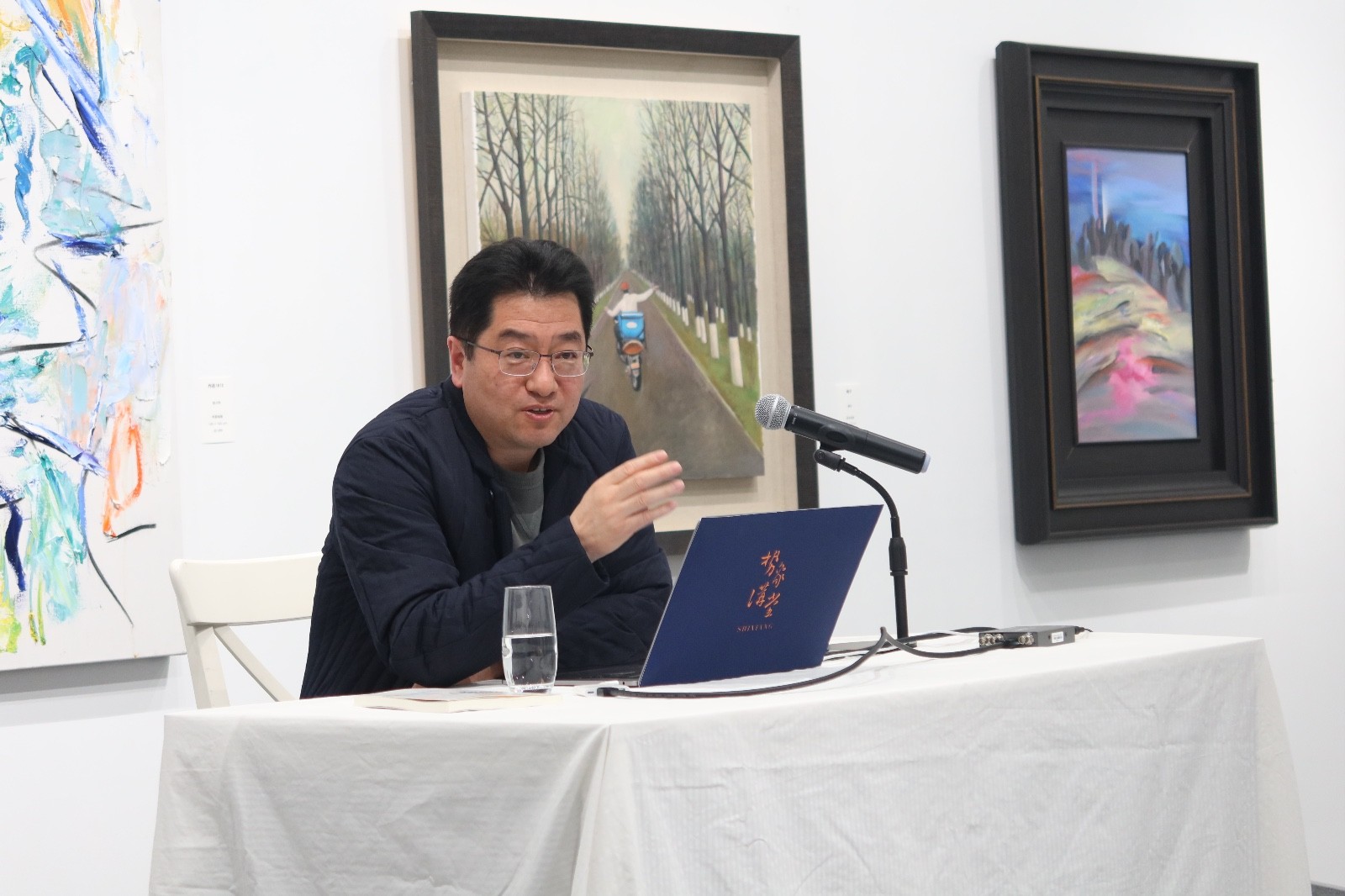
Themed Lecture on “The Coming Age of Emergence of Online Auction and Open Art Market”, Given by Li Dajun, CEO and Academic Director of Shixiang Space
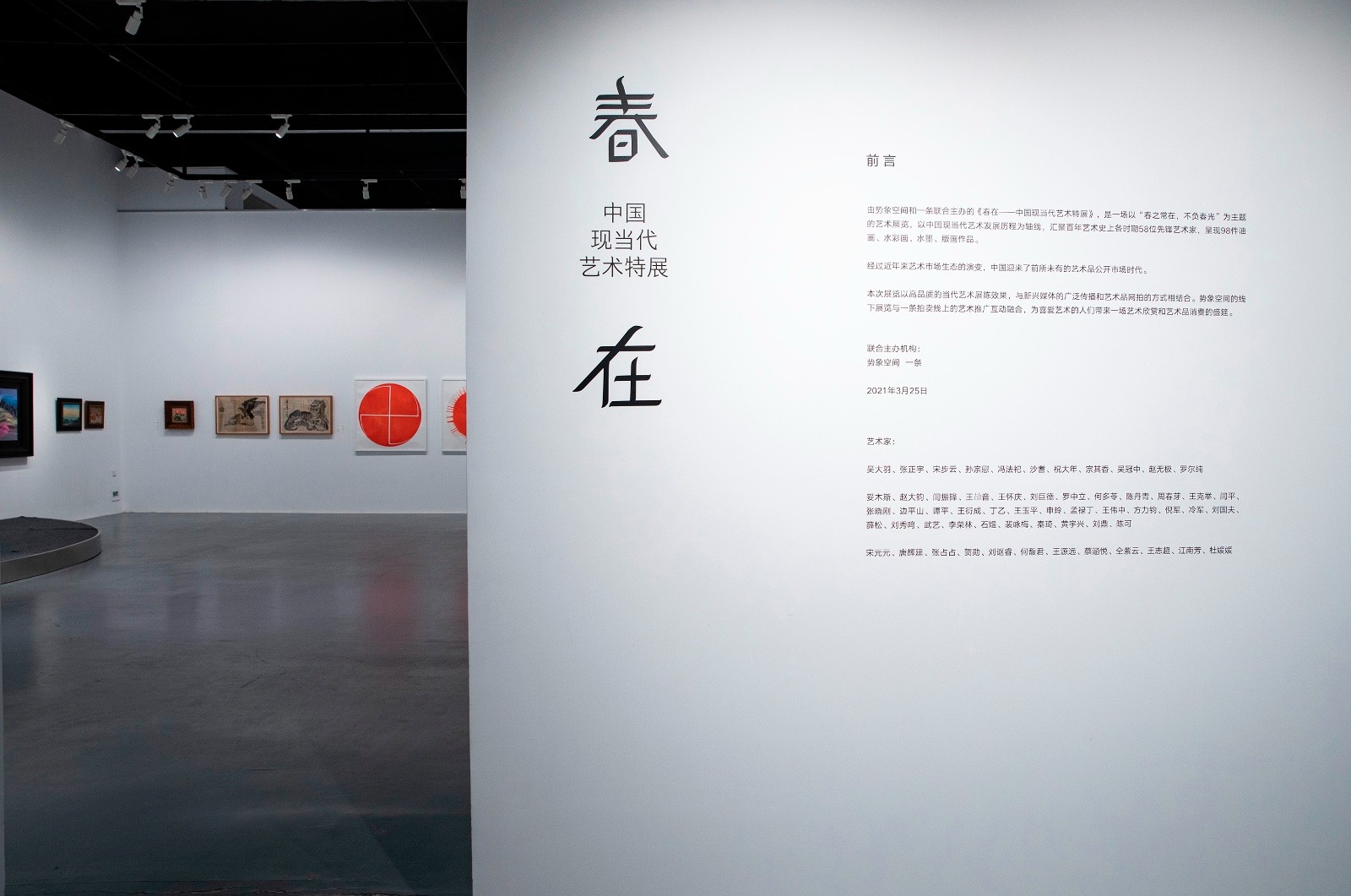

Exhibition View of “Spring Is Here—Special Exhibition of Chinese Modern and Contemporary Art”
Upon the transforming occasion of the art market, Shixiang Space and Yitiao jointly organized the exhibition entitled “Spring Is Here—Special Exhibition of Chinese Modern and Contemporary Art”, which was opened at Shixiang Space on March 27th. It marked a trans-boundary cooperation between an art institution and new media. The exhibition took the developing process of Chinese modern and contemporary art as the axis and then gathered nearly a hundred works by pioneering artists who were active in various periods. These exhibits were included on the online auction platform of Yitiao on April 5th and 6th. This combined the display in art space, new media promotion, and the online auction, which reflected the new trend in the current art market from a niche culture to a mass culture.
Catering to the issues related to the art market with the new trends, a themed lecture on “The Coming Age of Emergence of Online Auction and Open Art Market”, given by Li Dajun, CEO and Academic Director of Shixiang Space was held on the opening day of the exhibition. From the new phenomenon of online art auctions, Li explored the changes brought about by the new economic models to the art market, and he further discussed the prospects of the public market for art.
New Opportunities: The Rise of the Online Art Auction
Influenced by the pandemic prevailing in 2020, offline auction activities came across difficulties and quite a few auction institutions have turned to online ones. The online auction platform has gradually turned from WeChat groups, APP to mobile clients of auction institutions. The number of auction sessions and transaction volume have significantly increased compared with past data. Li Dajun held that, the rise of online auctions will encourage more people to pay more attention to the art market while recognizing the significance of auctions: from an economic sense, the important role of auctions means that they match resources to people better suited to them. For the art industry, auctions cannot just “discover” the prices of artworks, but they also assist with the promotion and dissemination of artworks. The public value of artworks can be highlighted through bidding rounds at auctions. Currently, when online shopping has become a daily consumption of the masses, online auctions provide new opportunities, enabling the public to shift their shopping goals to artworks and participate in art trading activities for the purpose of consumption and investment, thereby the formation of an art market oriented to the public will be accelerated.
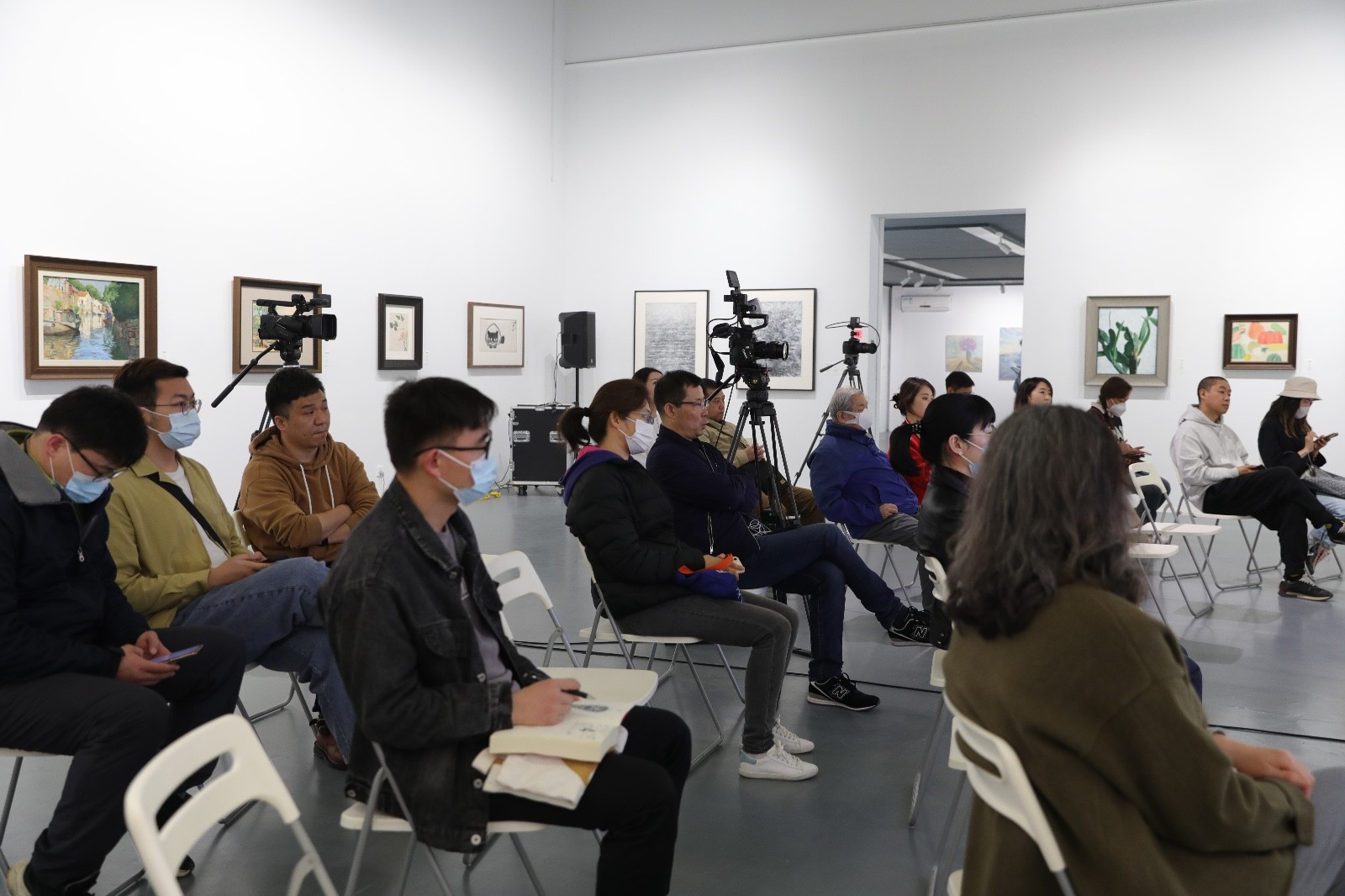
View of the Lecture
In addition to it, the advantage of online auctions lies in the fact that it enhances the circulation of artworks. Previously auction companies in China focused their attention on large-scale auction projects such as spring and autumn auctions. Li Dajun believed that spring and autumn auctions have the features of a large scale tasks with a long interval, thus it was difficult to satisfy the transaction needs of operating institutions, general investors and collectors, which caused a dilemma that “they can be brought but they are difficult to sell.” If there was an internet-based art market, the art trading business will become relatively ordinary and close to the public. Online auction platforms can be facilitated monthly, weekly and even daily and the problem of circulation can also be solved. Regarding this, Li Dajun said that if the previous online auctions were just a supplementary transaction form to traditional auctions, the current online auctions may become a larger auction activity.
New Trends: The Developing Prospect of Open Art Markets
“Online art auctions based on the principle of circulation will further promote the arrival of an open art market,” said Li Dajun, the so-called “openness”, on the one hand, refers to the openness of the transaction site, such as the two major auctions of Christie’s and Sothby’s, they have adopted an online live auction using a globally synchronized mode, which intends to attract buyers and audiences from all over the world to participate in it; on the other hand, the scope of the transaction entities is also expanded. Online art auctions first of all benefit traditional auction companies with business foundations. Meanwhile, it will also attract the attention of other industries such as new media and give birth to a new competitive situation in the related field. More importantly, the open art market indicates the “fusion” of various levels of art industry: the integration of online auctions and offline exhibitions, primary market (auction industry) and the secondary market ( art institutions such as galleries), the integration of local and international markets, the combination of an art career with the art industry, and so on.
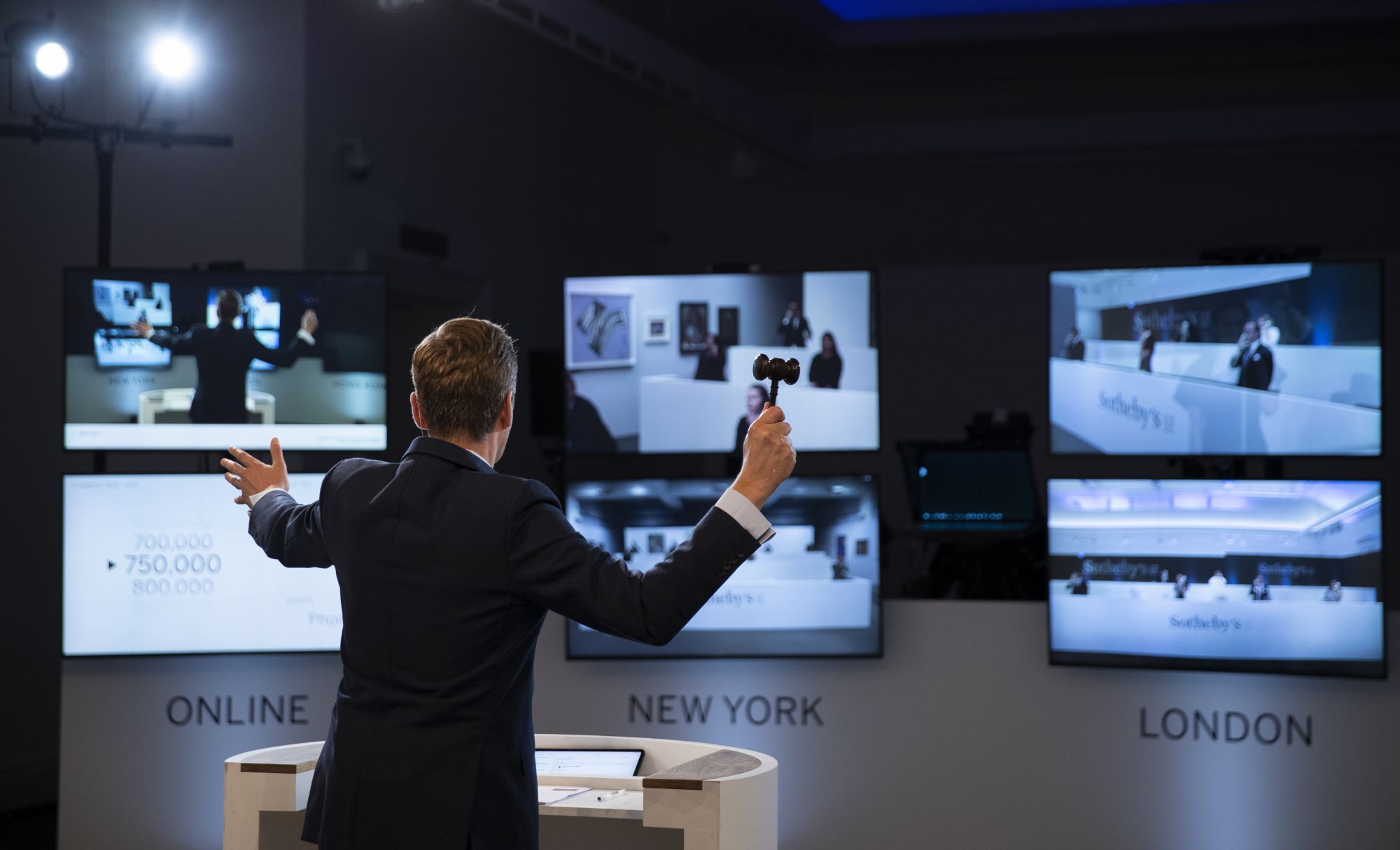 Live Screaming of Online Auction Held by Sotheby’s (Photo from www.sothebys.com)
Live Screaming of Online Auction Held by Sotheby’s (Photo from www.sothebys.com)
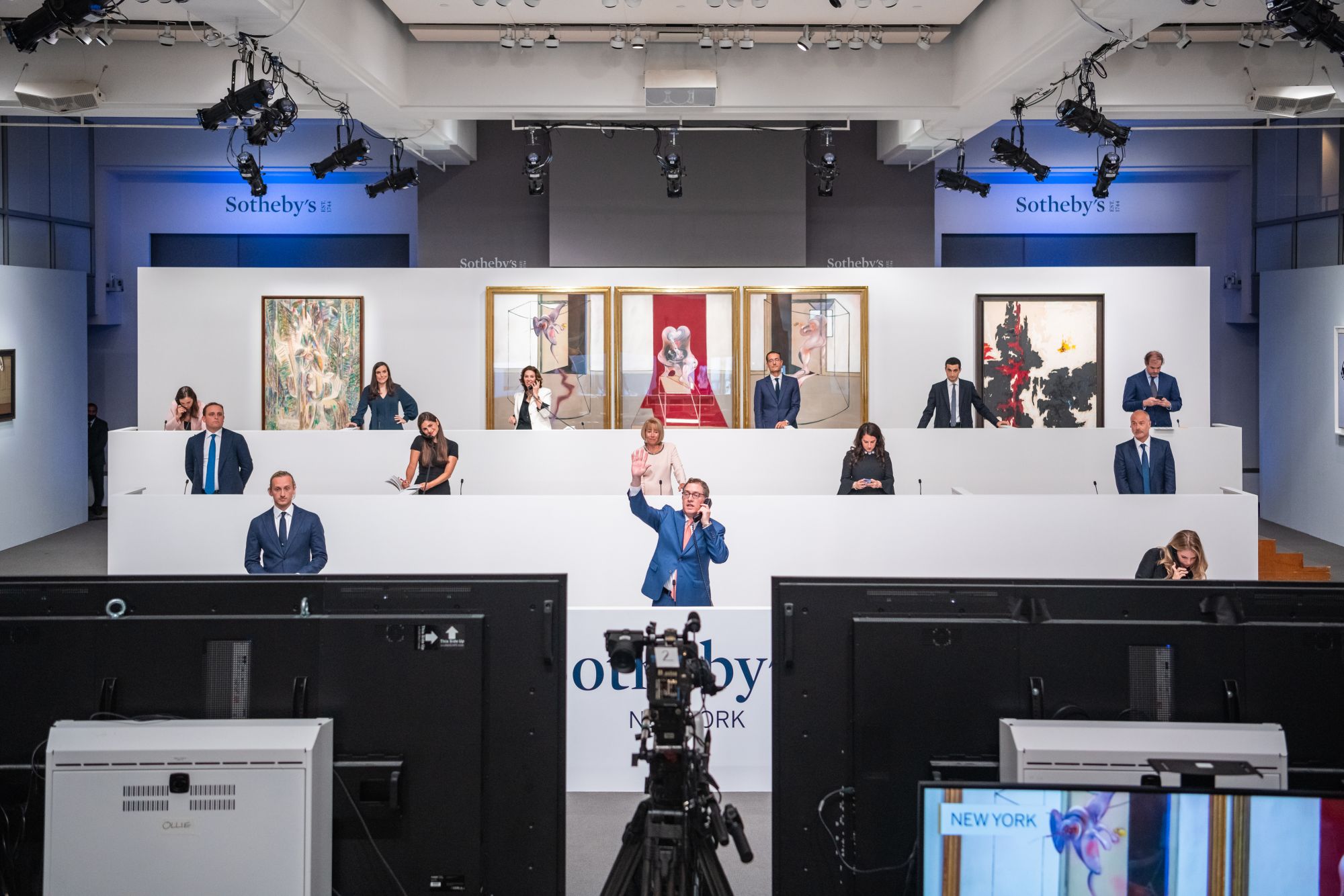 Live Screaming of Online Auction Held by Sotheby’s (Photo from CNN)
Live Screaming of Online Auction Held by Sotheby’s (Photo from CNN)
From his observation of the current art industry, Li Dajun put forward his opinion on the future developing trend of the open art market. He believed that for investors, collectors and consumers, inflation, restrictions on real estate investment and the downturn in the stock markets will stimulate investments in art. With the interaction of academic research and the art market, more high-end art resources with authentic value will be increasingly cherished, thus fine artworks will become rigid assets. Also, the emergence of “trend art” will drive the public’s art consumption by watching art exhibitions and buying prints or other art products with limited editions to become a part of popular culture.

Virtual Preview of Christie’s Auction
For art institutions and auction houses, trading rules in art will turn from the closed state to an open one: the transaction mode of “public relations” that are limited to a certain social circle has gradually become invalid, and the admitted rules, and the latent rules between galleries and auction houses such as “no new works included in auctions” will also be challenged as the tendency that auction houses manage art spaces while art spaces get involved in auction activities becomes more obvious. Driven by the new economic model in the internet era, capital, channels, and media are changing. Art institutions ceased to develop on a large scale, while individual and small institutions can also survive in the field. The key to success lies in the construction of its professional image and influence.
For artists, within the environment of the open art market, competitions among artists become more intense. In the era of new media, the influences of “iconic” artists will continue to increase and younger artists will become renowned as the market favors artists with more possibilities and changes. With the continuous exploration in communication methods, supply and demand relationships, as well as individual values with the art market, the reference value of market performance in the evaluation system of artists will also increase.
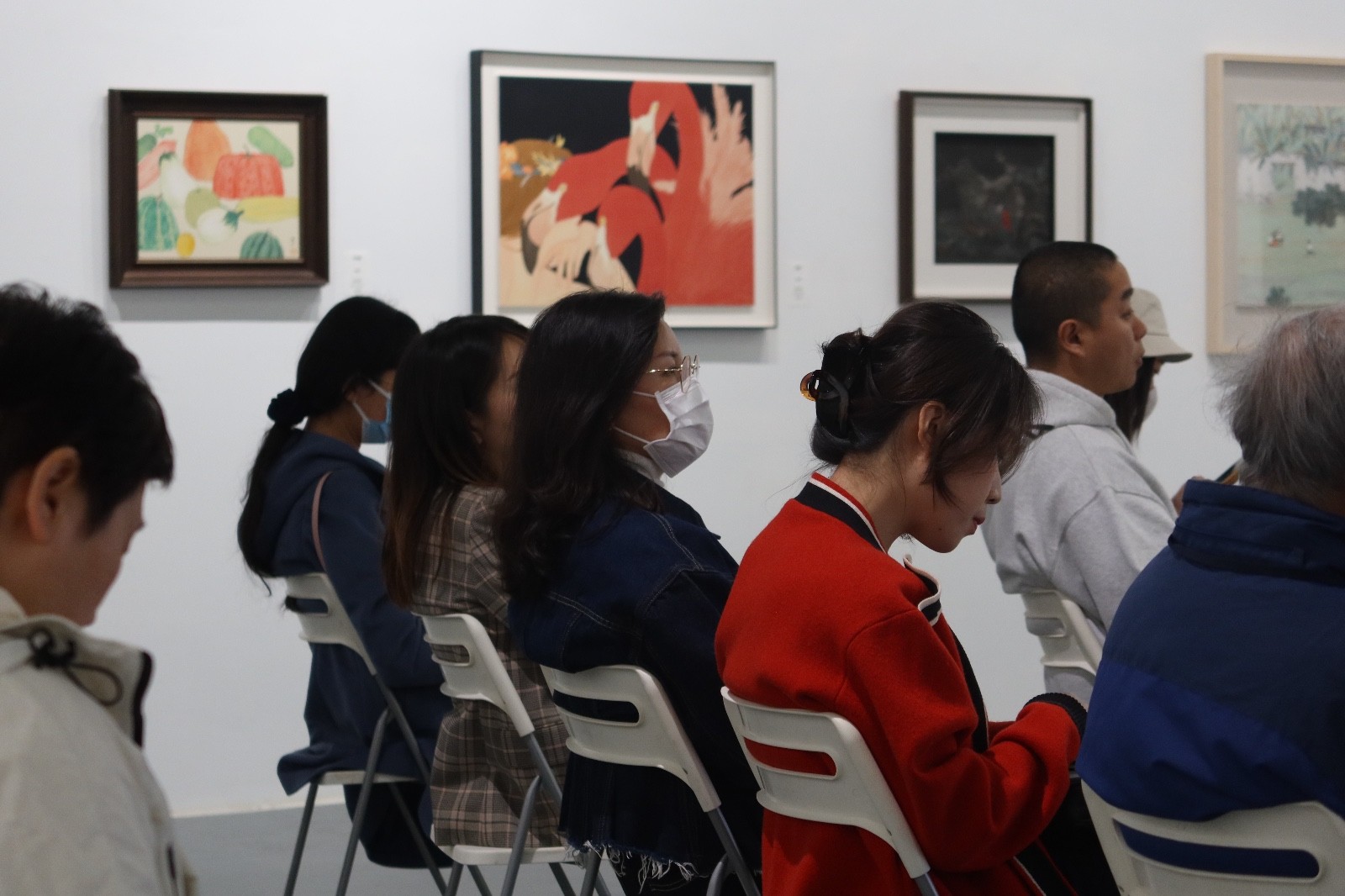
View of the Lecture
The development of the open art market undergoes constant changes. The open art market will affect and shock the traditional art market, artists, practitioners in the art industry as well as the public. As Li Dajun mentioned at the end of the lecture. “As described in ‘Book of Changes’, ‘a(chǎn)daptation making appropriateness’, this impact should always remind us that the era keeps changing, and all what we can do is to accept it.”
Text by Hu Zihang, edited by Yang Zhonghui/CAFA ART INFO
Edited and translated by Sue/CAFA ART INFO
Image Courtesy of the Organizer
Reference:
1. Li Dajun: “Transitions from Social Art Market to Value Art Market”, published on the official account of Shixiang Space, the full text can be found on the website: https://mp.weixin.qq.com/s/VqNl3GnDEdiVDExaLSMZ8g.
Press Conference of “Spring Is Here—Special Exhibition of Chinese Modern and Contemporary Art”
On the afternoon of March 27th, 2021, “Spring Is Here—Special Exhibition of Chinese Modern and Contemporary Art” co-sponsored by Shixiang Space and Yitiao commenced at Shixiang Space. The exhibitions took the developing process of Chinese modern and contemporary art as the axis, and then divided it into three parts according to the three eras that 58 participating arts have lived in: important artists in the history of Chinese modernist art in the 20th century, the backbone of contemporary artists, a new generation of outstanding young artists. It showcased a total of 98 oil paintings, watercolors, ink and wash as well as prints.
The title “Spring Is Here” derived from a painting by artist Wu Dayu with the same title. According to Yuan Rui, Curator of this exhibition, “Spring Is Here” accurately and poetically conveys our present mood. While the pandemic raged across the world in 2020, everyone felt the coldness of the midwinter, but the spring of 2021 finally comes, and artists have been comforting and enlightening our hearts with their independent thinking and art creation with spiritual wisdom.

Exhibition View of “Spring Is Here—Special Exhibition of Chinese Modern and Contemporary Art”
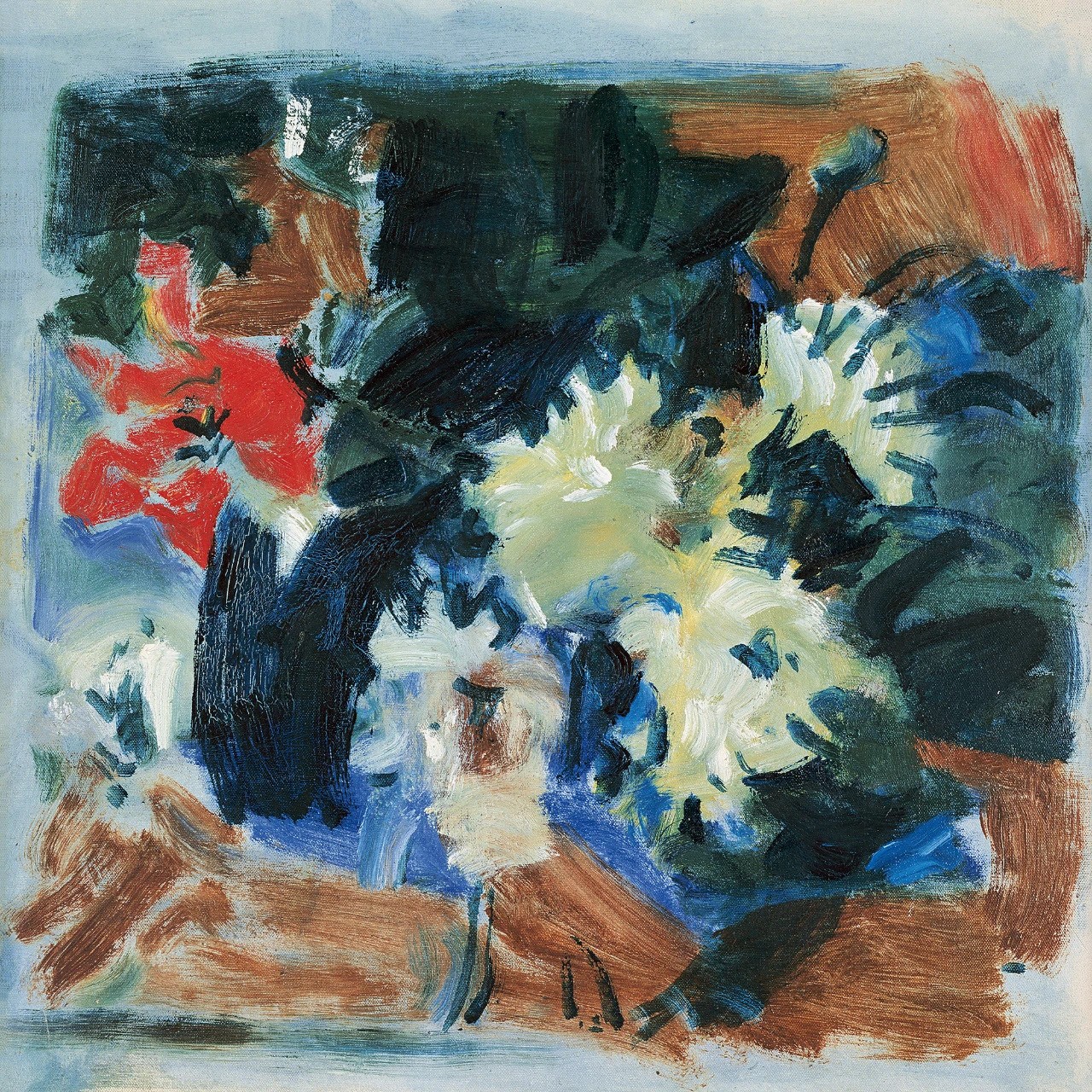
Wu Dayu, “Spring Is Here”, digital print, 33cm×33cm, 2021
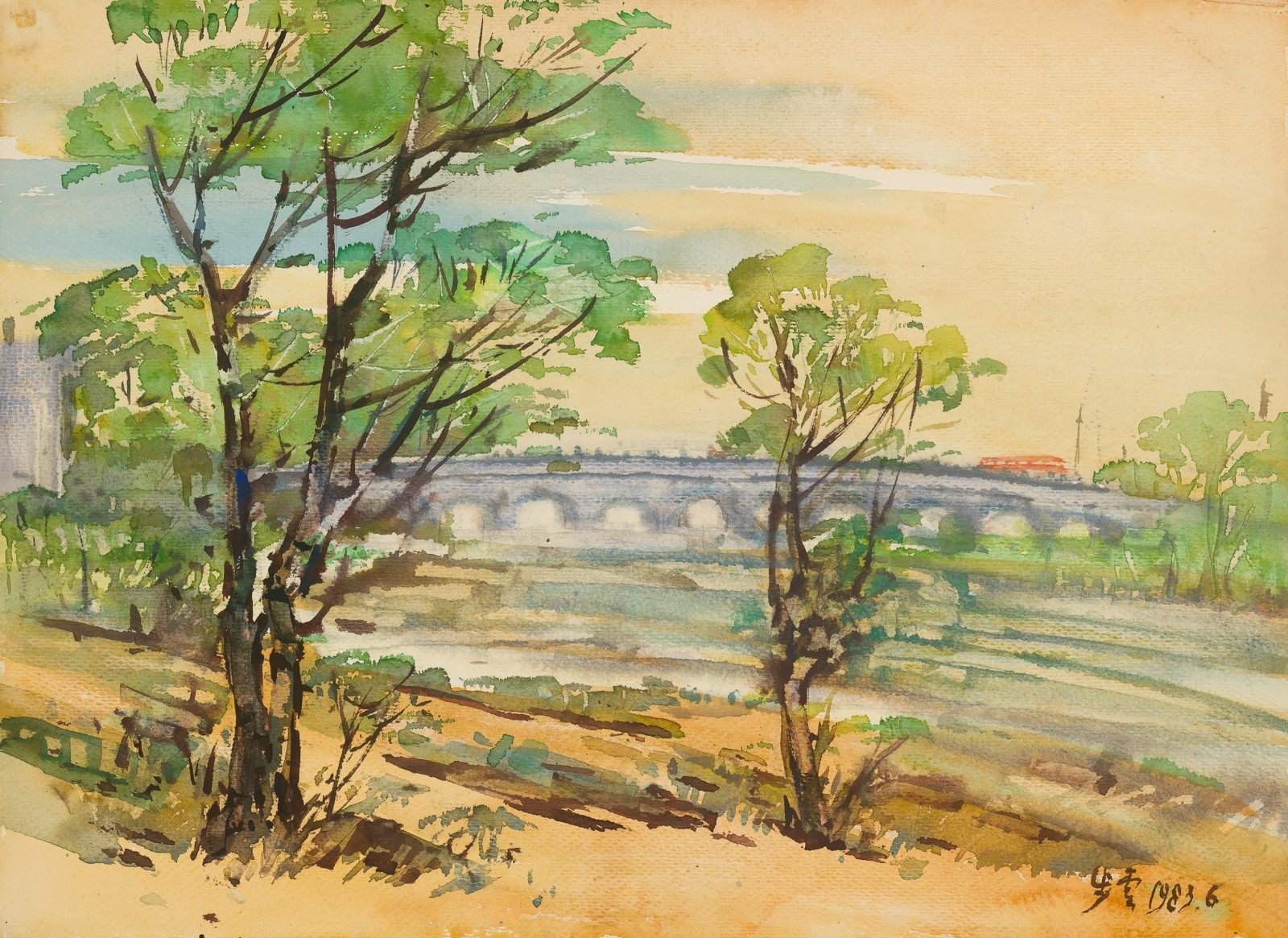
Song Buyun, “ Spring Scenery at Changchun South Lake”, watercolor on paper, 39cm×54.5cm, 1983
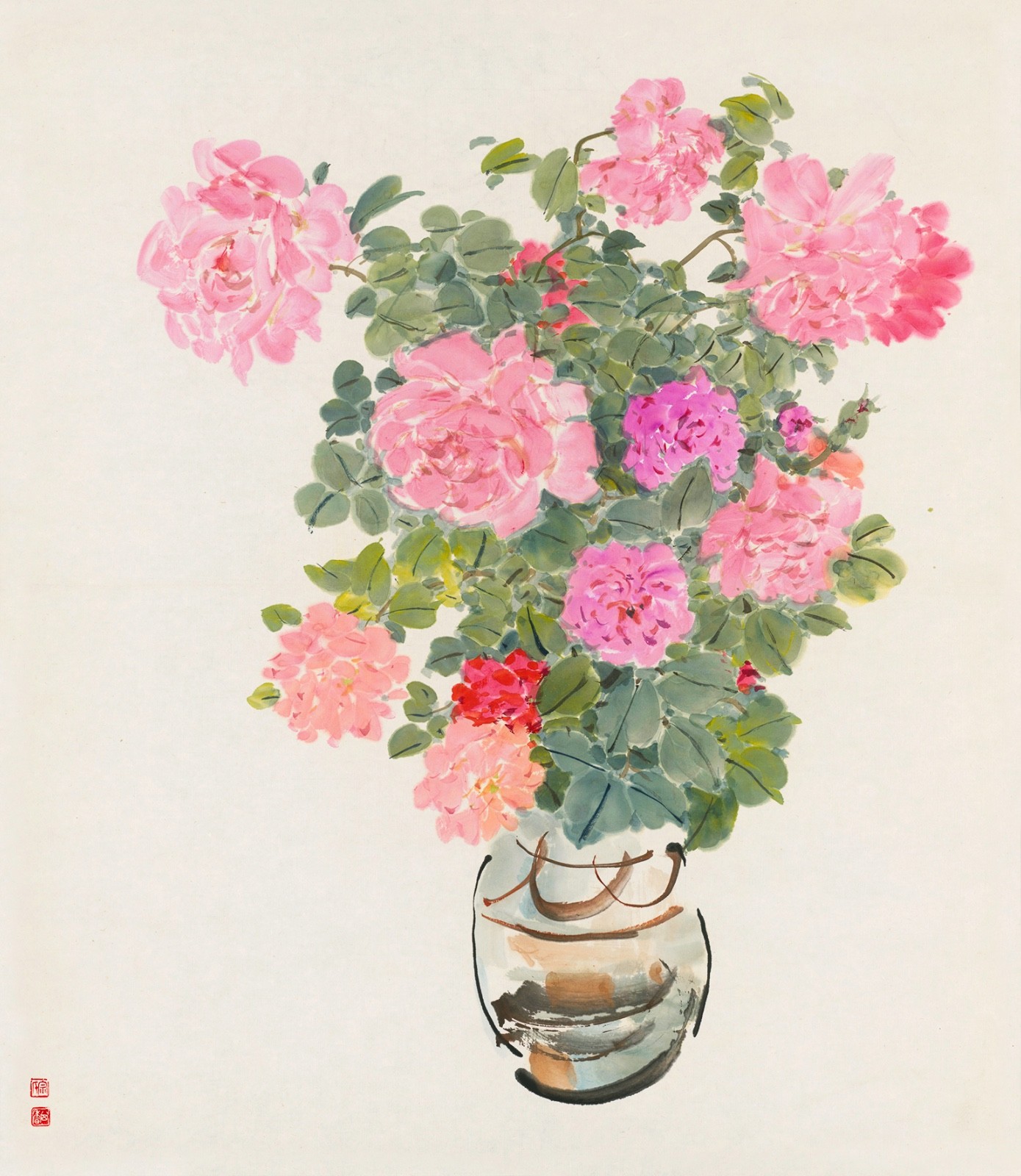
Zong Qixiang, “Rose in Vase”, ink and color on paper, 80cm×70cm, 1980s
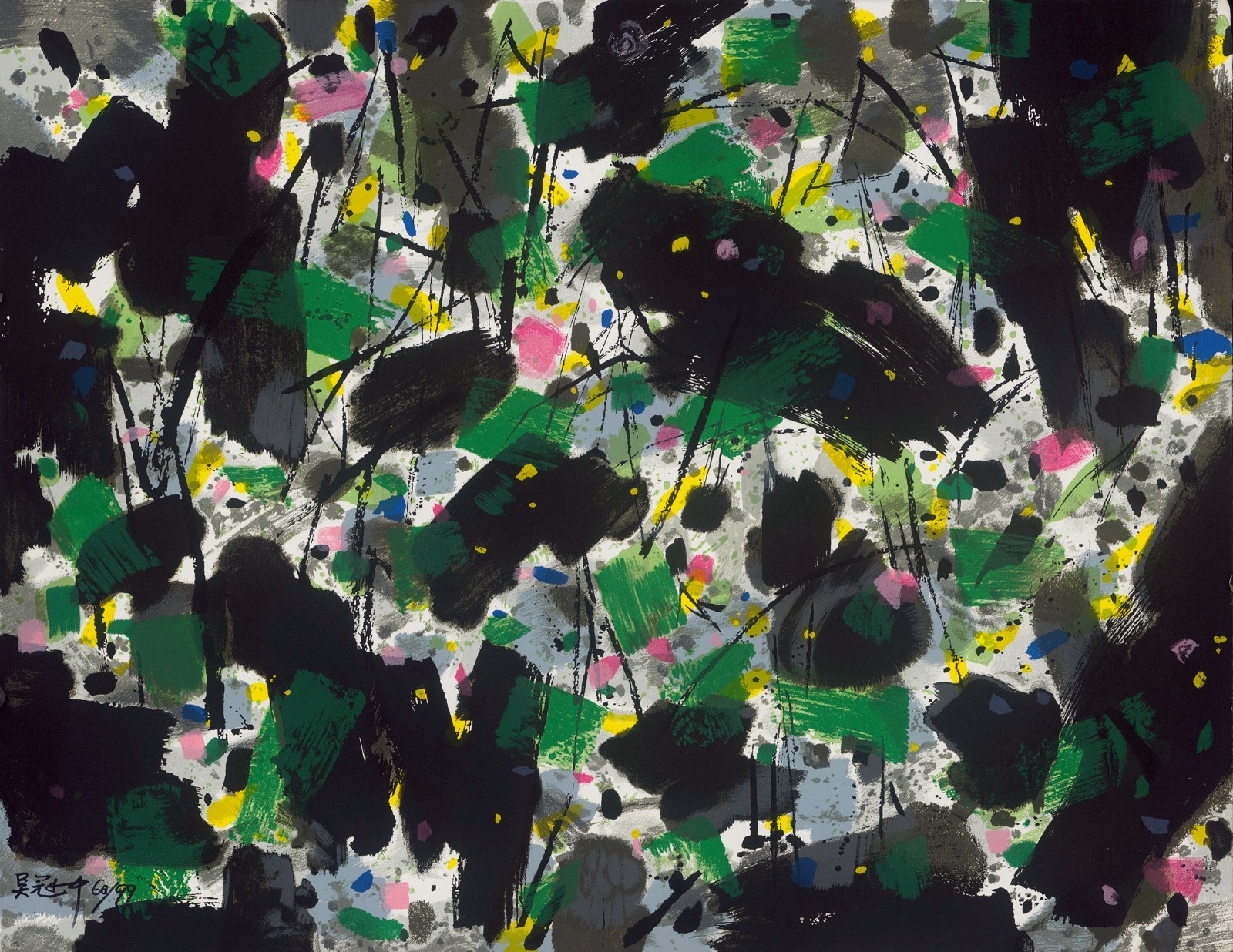
Wu Guanzhong, “Lotus Pond”, signed silkscreen print, 56.5cm×73cm, 2007

Bian Pingshan, “Vase of Flowers”, ink and wash on gold powder paper, 65cm×39cm, 2017
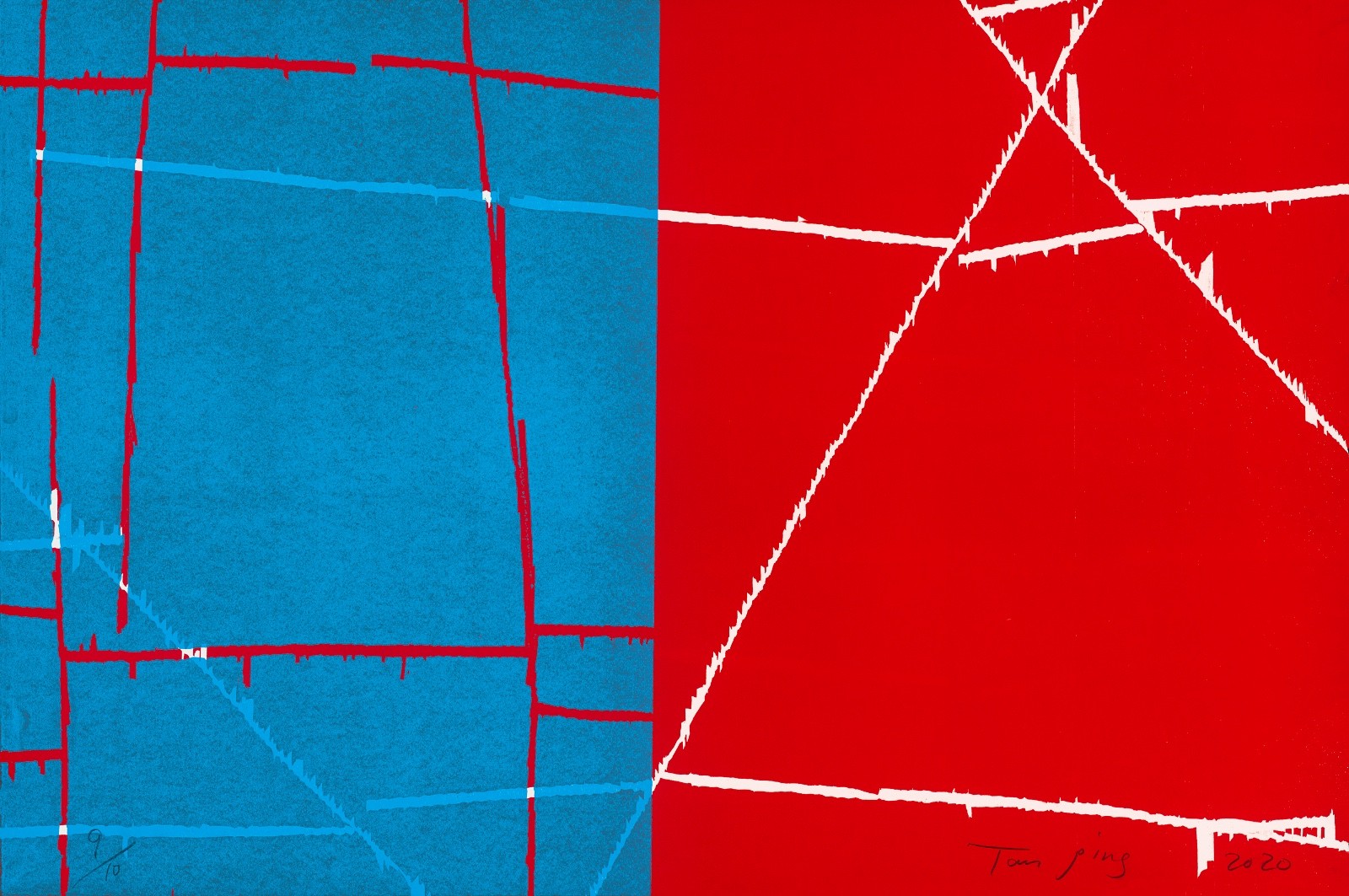
Tan Ping, “Untitled”, colored woodcut print, 60cm×79cm, 2020

Chen Danqing, “Four Horses”, signed digital print, 53cm×73cm, 2012
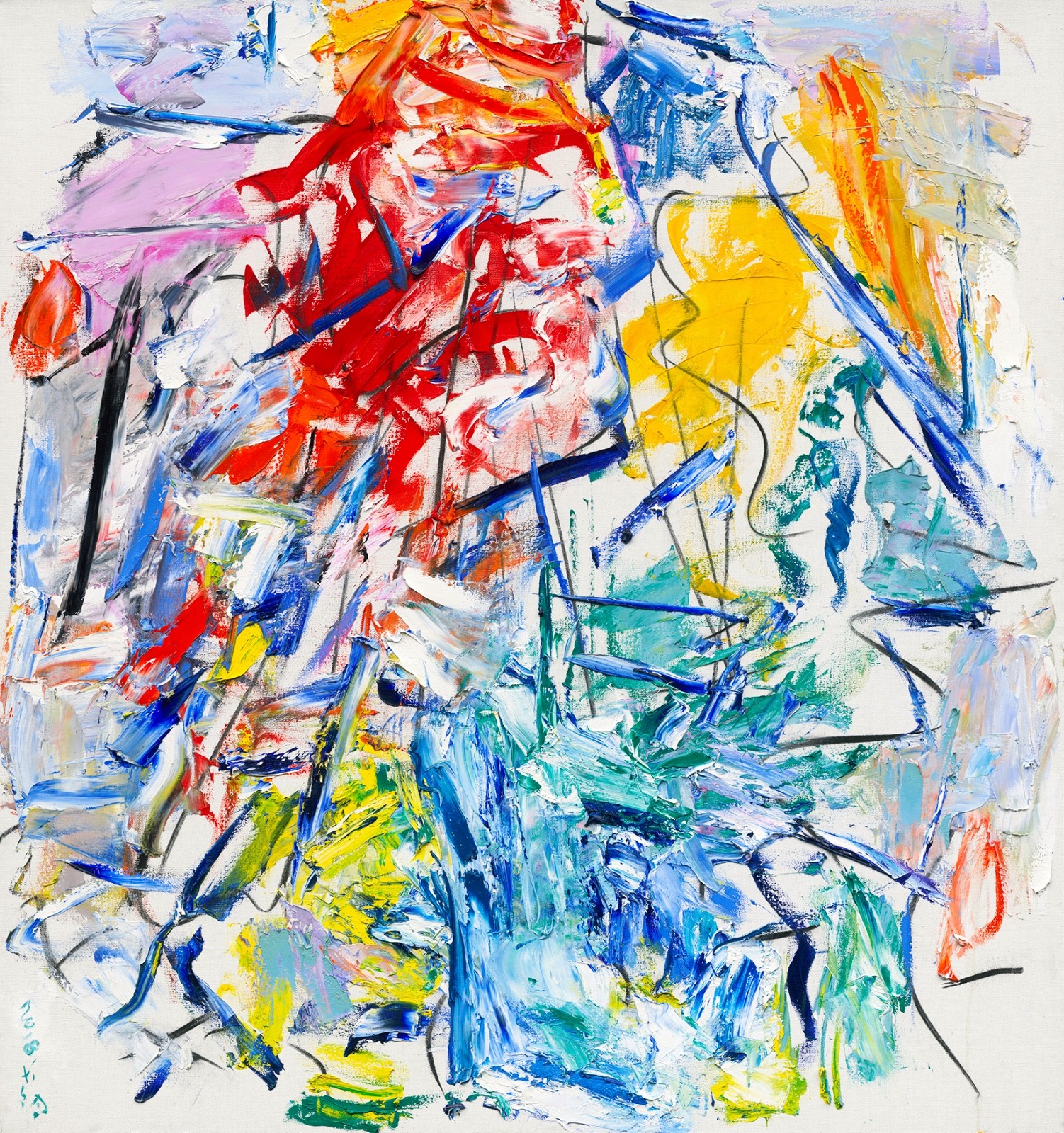
Zhao Dajun, “Sacred Mountain K2”, signed silkscreen print, 59cm×76.5cm, 2019

Fang Lijun, “Spring in 2013”, signed lithograph, 63cm×87cm, 2015
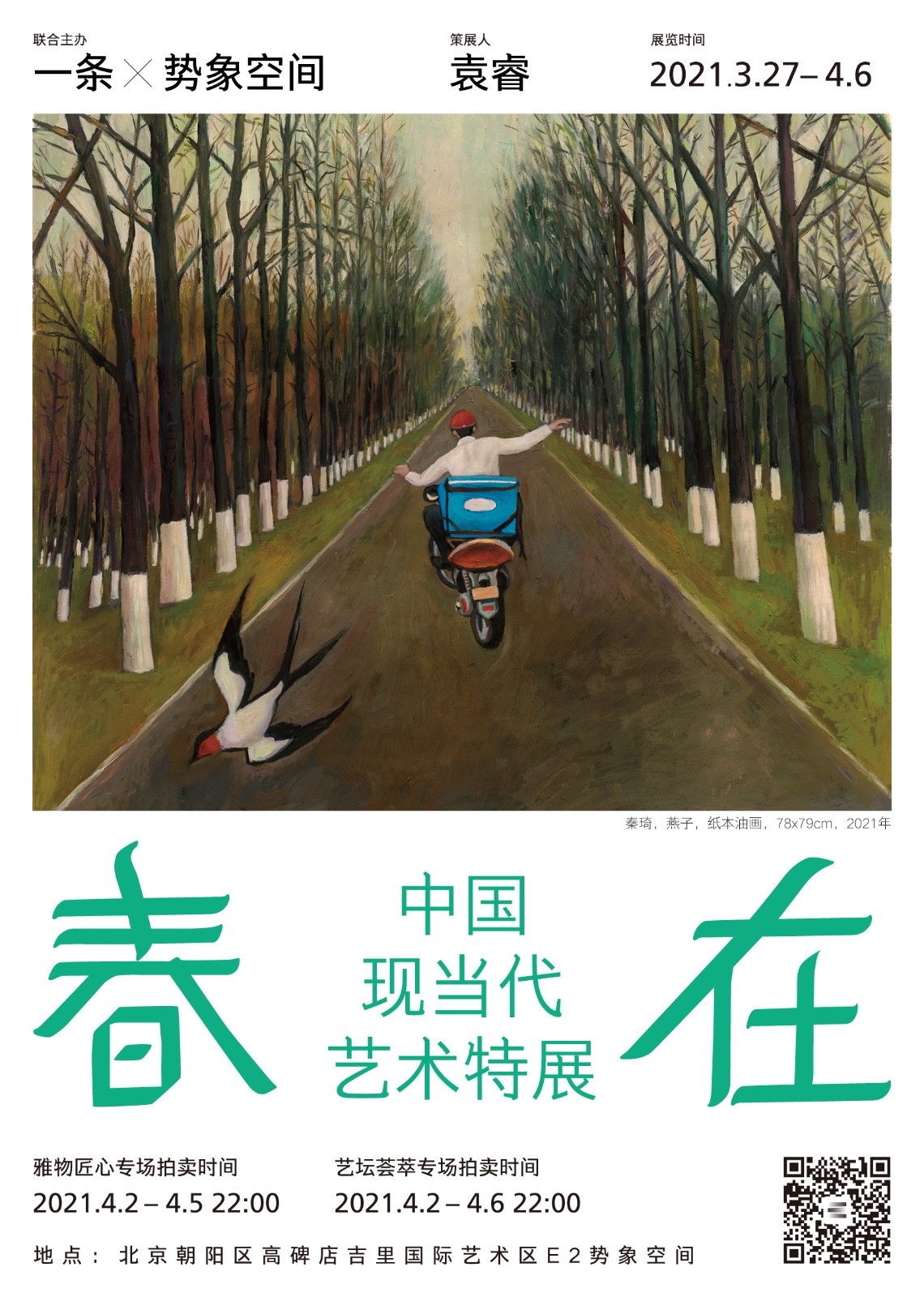
Exhibition Poster
About the exhibition
Exhibition time: March 27-April 6, 2021
Organizer: Shixiang Space, Yitiao
Curator: Yuan Rui
Venue: Shixiang Space
Participating artists:
Wu Dayu, Zhang Zhengyu, Song Buyun, Sun Zongwei, Feng Fasi, Sha Qi, Zhu Danian, Zong Qixiang, Wu Guanzhong, Zao Wou-ki, Luo Erchun, Tuomusi, Zhao Dajun, Yan Zhenduo, Wang Jieyin, Wang Huaiqing, Liu Jude, Luo Zhongli, He Duoling, Chen Danqing, Zhou Chunya, Wang Keju, Yan Ping, Zhang Xiaogang, Bian Pingshan, Tan Ping, Wang Yancheng, Ding Yi, Wang Yuping, Shen Ling, Meng Luding, Wang Weizhong, Fang Lijun, Ni Jun, Leng Jun, Liu Guofu, Xue Song, Liu Xiuming, Wu Yi, Li Ronglin, Shi Yu, Pei Yongmei, Qin Qi, Huang Yuxing, Liu Ding, Chen Ke, Song Yuanyuan, Tang Huijian, Zhang Zhanzhan, He Xun, Liu Ourui, He Fujun, Wang Yuanyuan, Cai Hanyue, Tong Ziyun, Wang Zhichao, Jiang Nanfang, Du Yuanyuan



























